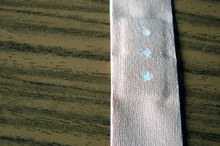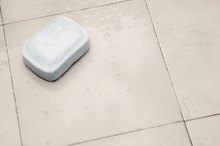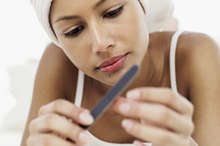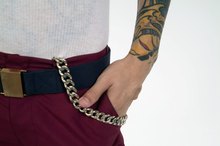What does fact checked mean?
At Healthfully, we strive to deliver objective content that is accurate and up-to-date. Our team periodically reviews articles in order to ensure content quality. The sources cited below consist of evidence from peer-reviewed journals, prominent medical organizations, academic associations, and government data.
The information contained on this site is for informational purposes only, and should not be used as a substitute for the advice of a professional health care provider. Please check with the appropriate physician regarding health questions and concerns. Although we strive to deliver accurate and up-to-date information, no guarantee to that effect is made.
How to Treat a Cut on the Eyebrow
Small cuts are painful but rarely serious 1. Basic first aid protocol advises that you stop the bleeding first, clean the wound and protect the open cut from germs and bacteria. A cut on your eyebrow, however, is slightly more complicated. The small hairs on your eyebrow protect your eyes by catching loose particles and debris. These hairs also keep bacteria and tiny foreign particles near your open cut on your eyebrow. Use extra diligence in treating a wound here.
Put on a rubber gloves.These are safety essentials whenever you touch another person's blood.
How to Treat a Brush Burn
Learn More
Clean the cut eyebrow with cool water and mild antibacterial soap 2. Gently massage the lather over the entire wound and eyebrow. Rinse thoroughly with cool water 1. Avoid using hot water, which encourages bleeding 1.
Tell the patient to lay down and firmly apply several strips of sterile gauze directly over the wound with your hand for five minutes. If the blood soaks through, keep the original gauze in place and add more layers on top. Do not remove the gauze before 20 minutes. Facial cuts bleed more profusely because the face contains a large number of blood vessels.
How to Remove the Residue from Glue Stitches on a Head Cut
Learn More
Remove the gauze after 20 to 30 minutes and examine the extent of the injury. Cuts that have not stopped bleeding at this point require immediate medical attention.
Remove any remaining blood around the wound and in the eyebrow hairs with a moist gauze pad.
Part the eyebrow hair and apply a pea-sized amount of antibacterial ointment directly to the wound using a cotton swab.
Apply an adhesive bandage lengthwise so the adhesive portion sticks to your skin, not your eyebrow hair. For larger cuts, place a single layer of gauze over the wound before applying the bandage 2.
Repeat Steps 2, 6 and 7 at least twice a day, at morning and before bed, until the wound heals. Perform additional cleaning and bandage changes anytime the skin becomes wet from swimming or sweating. Keeping the wound and the surrounding eyebrow hair clean and dry will expedite the healing time.
Tips
Reduce the amount of sweat and bacteria in your eyebrow cut by wearing a sweatband during warm weather or while exercising.
Warnings
Seek medical attention immediately if the cut is still bleeding after 20 minutes, if the length of the wounder is longer than 1/2inch or if small particles, like rocks or sand, are inside the wound.
Related Articles
References
Tips
- Reduce the amount of sweat and bacteria in your eyebrow cut by wearing a sweatband during warm weather or while exercising.
Warnings
- Seek medical attention immediately if the cut is still bleeding after 20 minutes, if the length of the wounder is longer than 1/2inch or if small particles, like rocks or sand, are inside the wound.
Writer Bio
Christina Bednarz Schnell began writing full-time in 2010. Her areas of expertise include child development and behavior, medical conditions and pet health. She holds a Bachelor of Arts in international relations.







